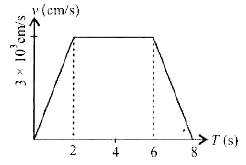The slope of straight line joining two points on velocity-time graph of an object having bobuniform motion gives…………………………………… fro the given interval of time.
Video Solution
Text Solution
average accleration
|
Topper's Solved these Questions
- KINEMATICSBook:PRADEEPChapter:KINEMATICSExercise:3 Fill in the blanks
Explore 12 Videos
- KINEMATICSBook:PRADEEPChapter:KINEMATICSExercise:4 Fill in the blanks
Explore 11 Videos
- KINEMATICSBook:PRADEEPChapter:KINEMATICSExercise:1 Fill in the blanks
Explore 10 Videos
- GRAVIATIONBook:PRADEEPChapter:GRAVIATIONExercise:Assertion-Reason Type Questions
Explore 19 Videos
- LAWS OF MOTIONBook:PRADEEPChapter:LAWS OF MOTIONExercise:Assertion- Reason Type Questions
Explore 17 Videos
Similar Questions
Knowledge Check
The slope of velocity-time graph for uniform motion of an object is
AUnityBZeroCInfiniteDMore than unity but has some finite valueThe velocity time graph of the motion of a car is given here.
 AThe distance travelled by the car in the first six seconds is 150 m.BThe deceleration of the car during the last two seconds are −15ms2.CThe distance travelled by the car in the first six second is 220 m.DThe deceleration of the car during the last two second is −20ms2
AThe distance travelled by the car in the first six seconds is 150 m.BThe deceleration of the car during the last two seconds are −15ms2.CThe distance travelled by the car in the first six second is 220 m.DThe deceleration of the car during the last two second is −20ms2The slope of a distance-time graph of a moving object indicates :
Adistance moved by the objectBtime taken by the objectCspeed of the objectDposition of the object
Assertion : The position-time graph of a body moving uniformly is a straight line parallel to position-axis.
Reason : The slope of position-time graph in a uniform motion gives the velocity of an object.
View SolutionWhat is the significance of a positive and b negative slope in velocity-time graph of an object in uniformly acclerated motion?
View SolutionDraw position-time graphs for two objects having zero relative velocity.
View SolutionDraw the position-time graph for an object in uniform motion. Show that the slope of the position-time graph gives the velocity of the object.
View SolutionThe velocity-time graph of a body moving with uniform velocity is a straight line parallel to __________
View Solution

